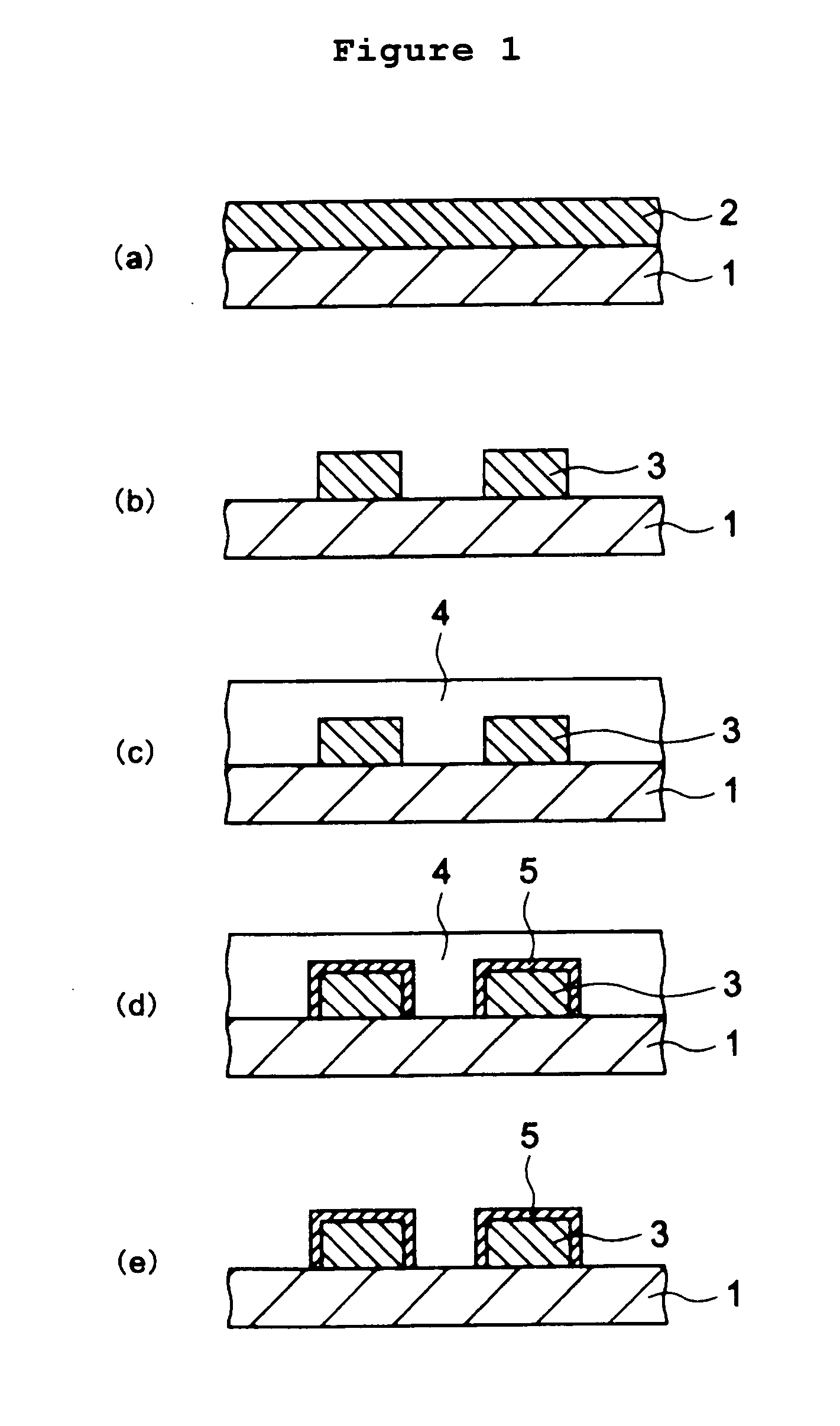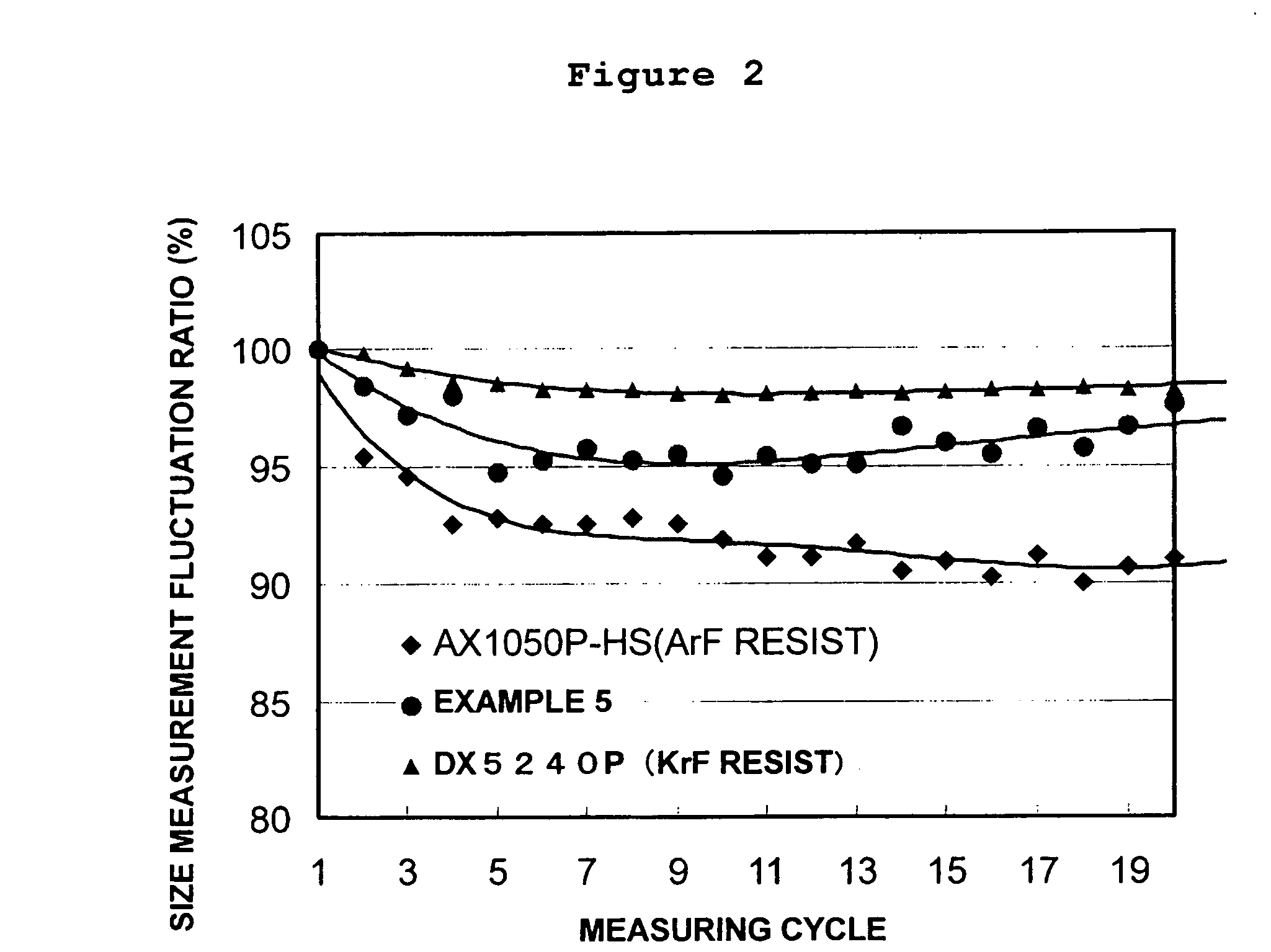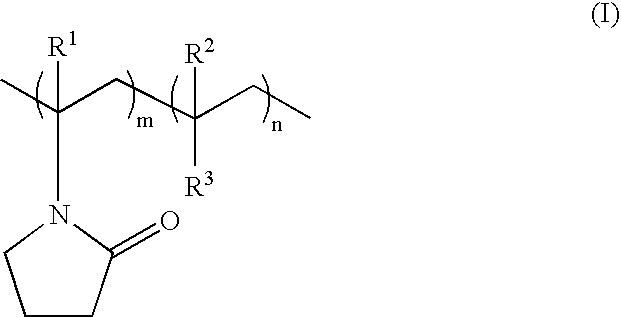Water soluble resin composition, method of pattern formation and method of inspecting resist pattern
- Summary
- Abstract
- Description
- Claims
- Application Information
AI Technical Summary
Benefits of technology
Problems solved by technology
Method used
Image
Examples
example 1
Preparation of a Water-Soluble Resin Composition A
[0037]
Polyvinylpyrrolidone-co-polyvinylacetate9.2 parts by weighttriethylamine salt of paratoluene0.8 parts by weightsulfonic acid andpure water90.0 parts by weight
were mixed and then stirred sufficiently to solve. Thereafter the solution was filtrated with a 0.2-μm filter to prepare a water-soluble resin composition A.
example 2
Preparation of a Water-Soluble Resin Composition B
[0038]
Polyvinylpyrrolidone-co-polyvinylimidazole4.5 parts by weightpolyvinylpyrrolidone0.8 parts by weighttriethylamine salt of paratoluene0.9 parts by weightsulfonic acidsurfactant (Acetylenol EL manufactured0.002 parts by weight by Kawaken Chemical company) andpure water93.8 parts by weight
were mixed and then stirred sufficiently to solve. Thereafter the solution was filtrated with a 0.2-μm filter to prepare a water-soluble resin composition B.
example 3
Formation of a Contact Hole Pattern
[0039] A positive-working photosensitive resin composition, AZ AX1050P-HS manufactured by Clariant Corporation (‘AZ’ is a trademark.) was applied on a silicon wafer of 6 inch in diameter treated with HMDS (hexamethyldisilazane) by a spin coater MK-8 manufactured by Tokyo Electron Co., Limited and pre-baked at 115° C. for 60 seconds on a hotplate to prepare a resist film of approximately 0.40 μm in thickness. Next, the resist film was exposed to light through a pattern, in which hole patterns having various kind of diameter sizes exist, by use of a light-exposure device PAS5500 / 950 manufactured by ASML Company with an exposure wavelength of ArF excimer laser (193 nm) and a post-exposure-bake (PEB) was conducted at 110° C. for 60 seconds on a hot plate. Thereafter the resist film was spray-paddle developed under the condition at 23° C. for one minute using alkali developing agent AZ 300MIF Developer (a 2.38% by weight an aqueous solution of tetrame...
PUM
| Property | Measurement | Unit |
|---|---|---|
| Percent by mass | aaaaa | aaaaa |
| Percent by mass | aaaaa | aaaaa |
| Percent by mass | aaaaa | aaaaa |
Abstract
Description
Claims
Application Information
 Login to View More
Login to View More - R&D
- Intellectual Property
- Life Sciences
- Materials
- Tech Scout
- Unparalleled Data Quality
- Higher Quality Content
- 60% Fewer Hallucinations
Browse by: Latest US Patents, China's latest patents, Technical Efficacy Thesaurus, Application Domain, Technology Topic, Popular Technical Reports.
© 2025 PatSnap. All rights reserved.Legal|Privacy policy|Modern Slavery Act Transparency Statement|Sitemap|About US| Contact US: help@patsnap.com



